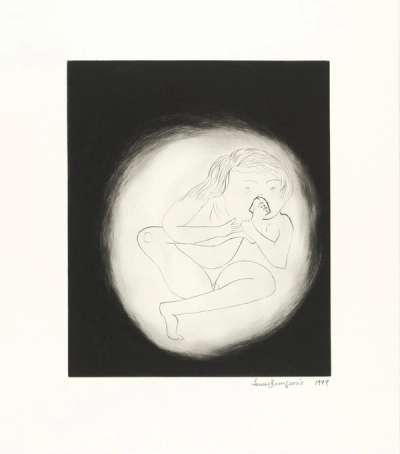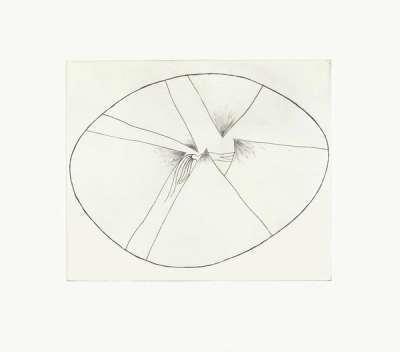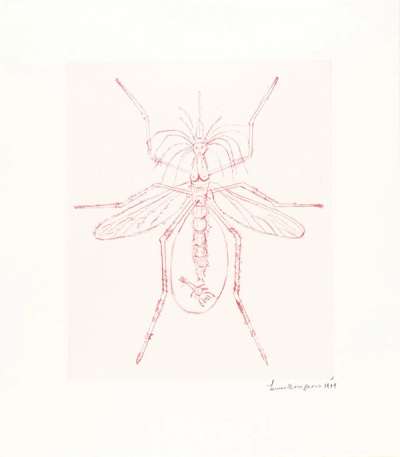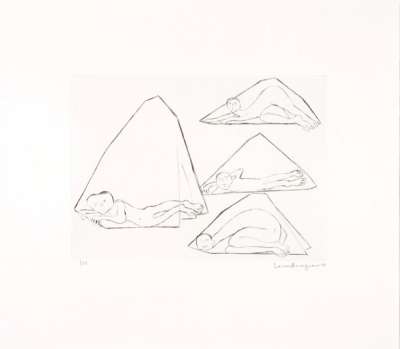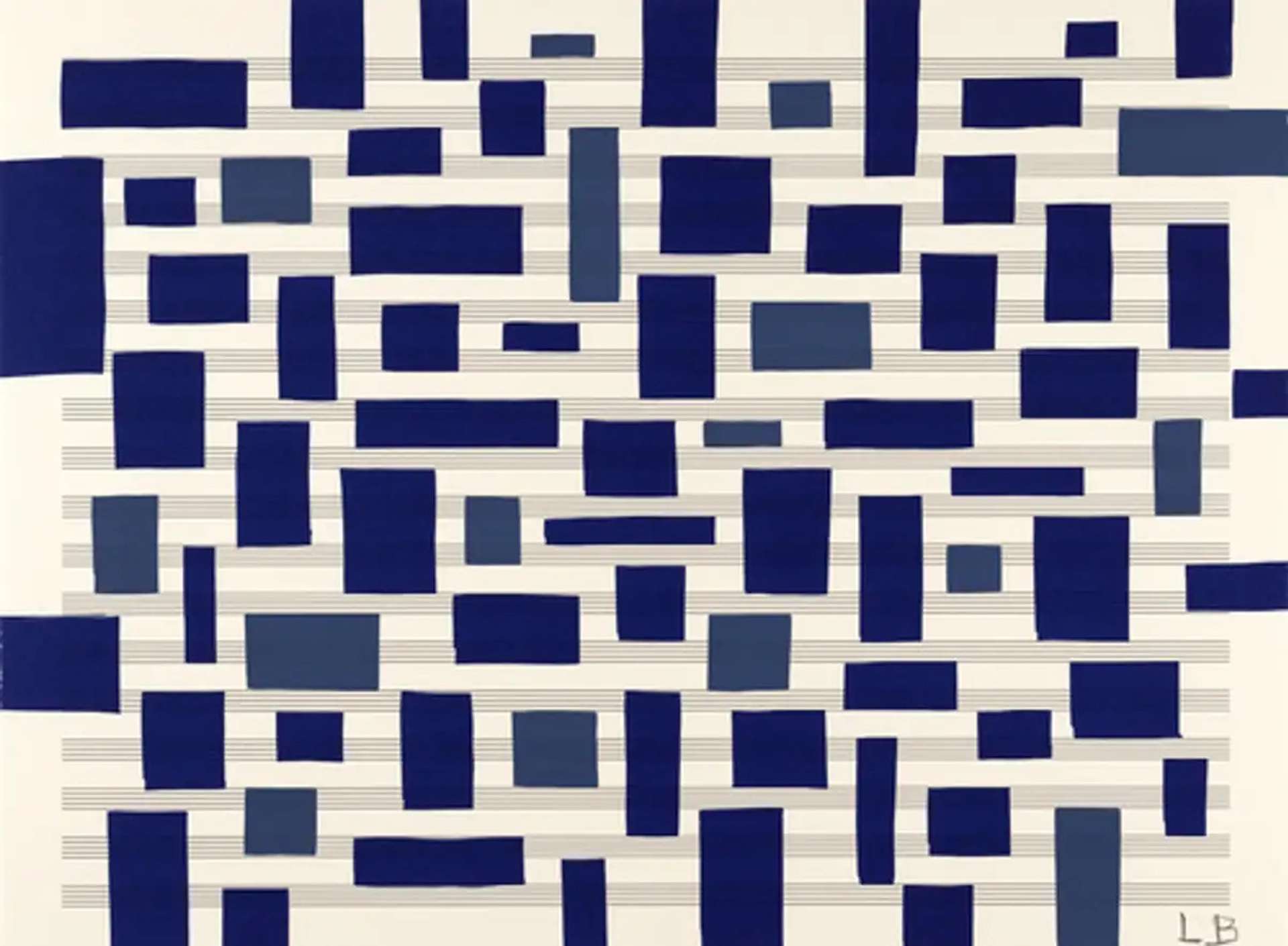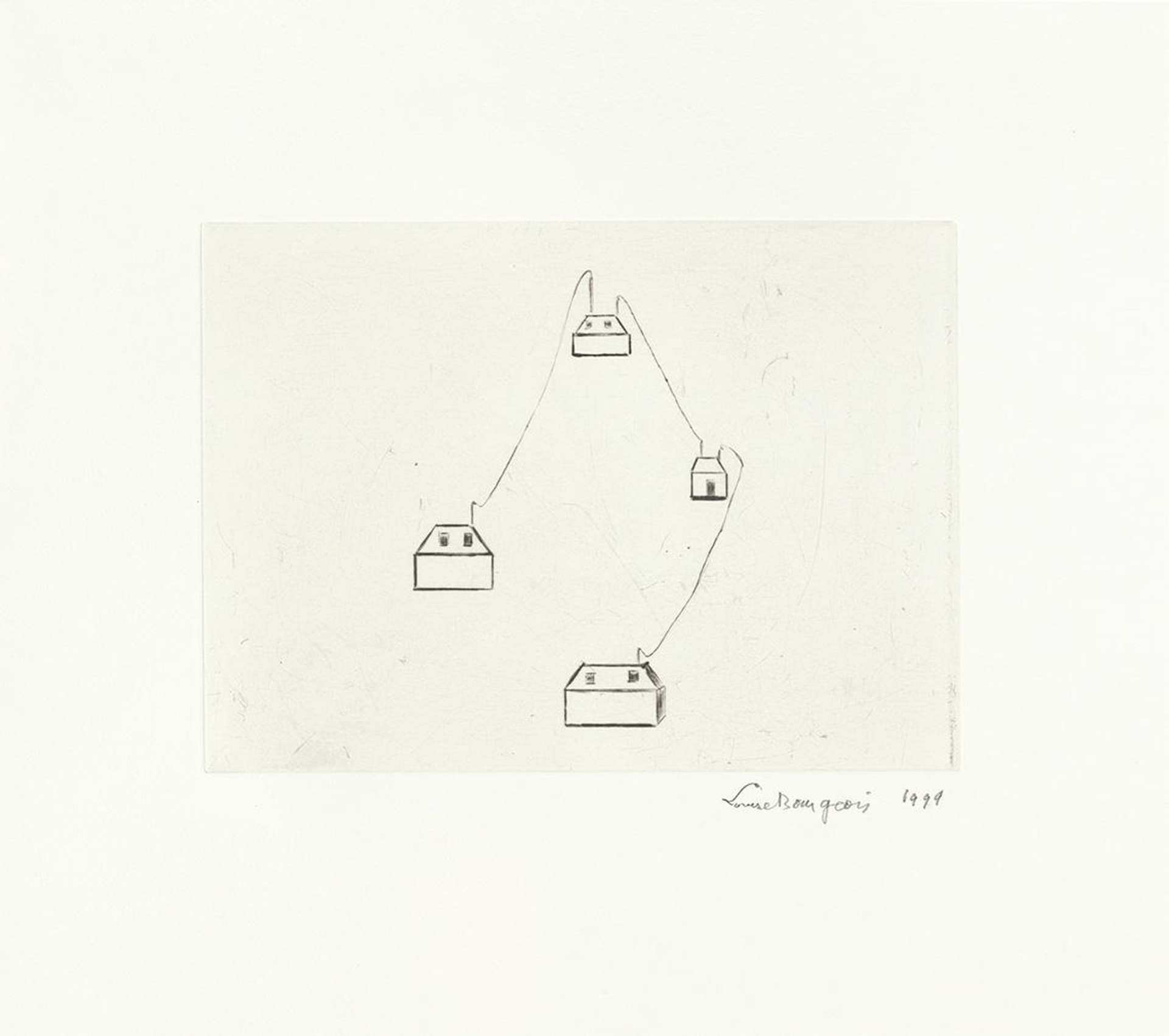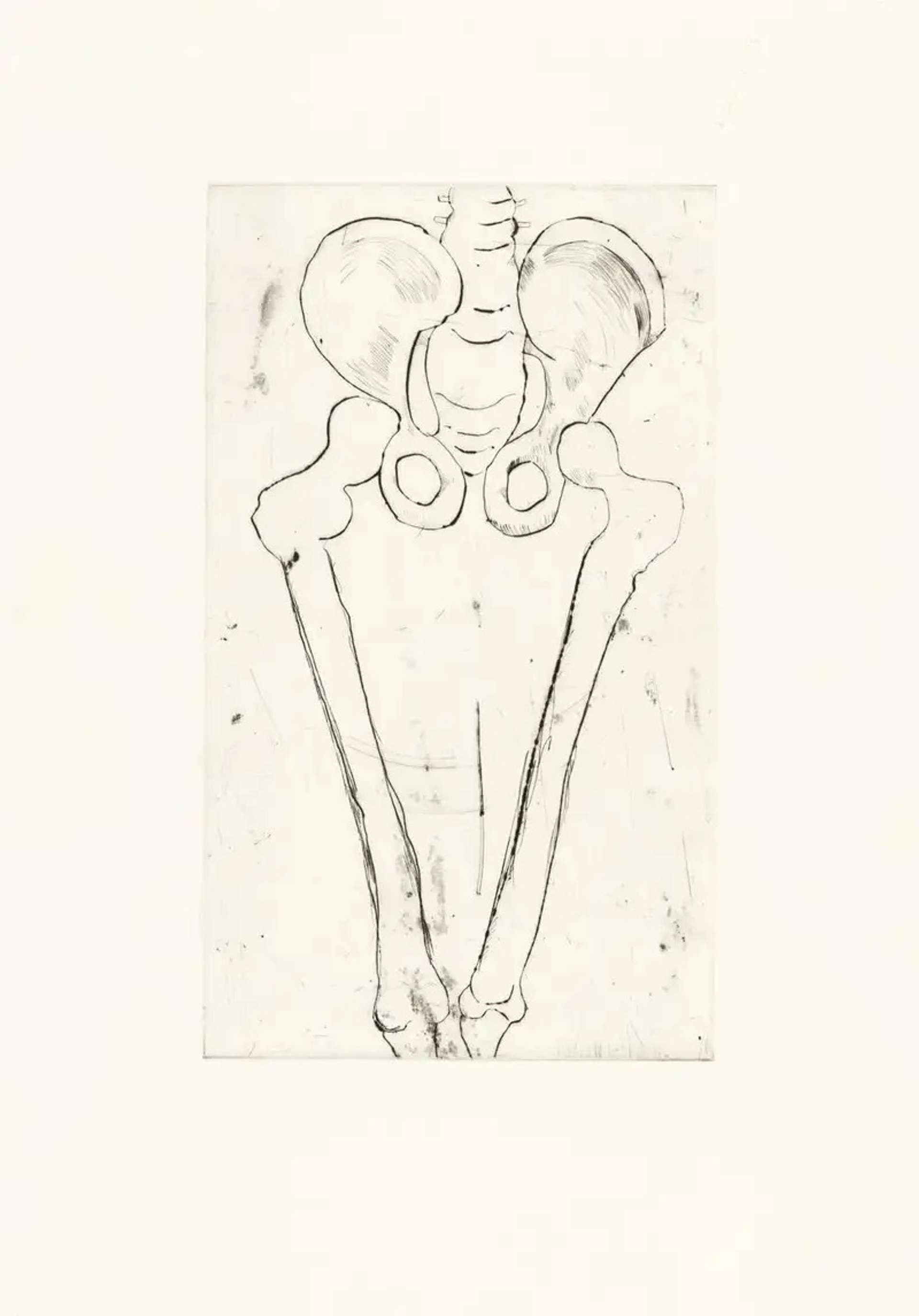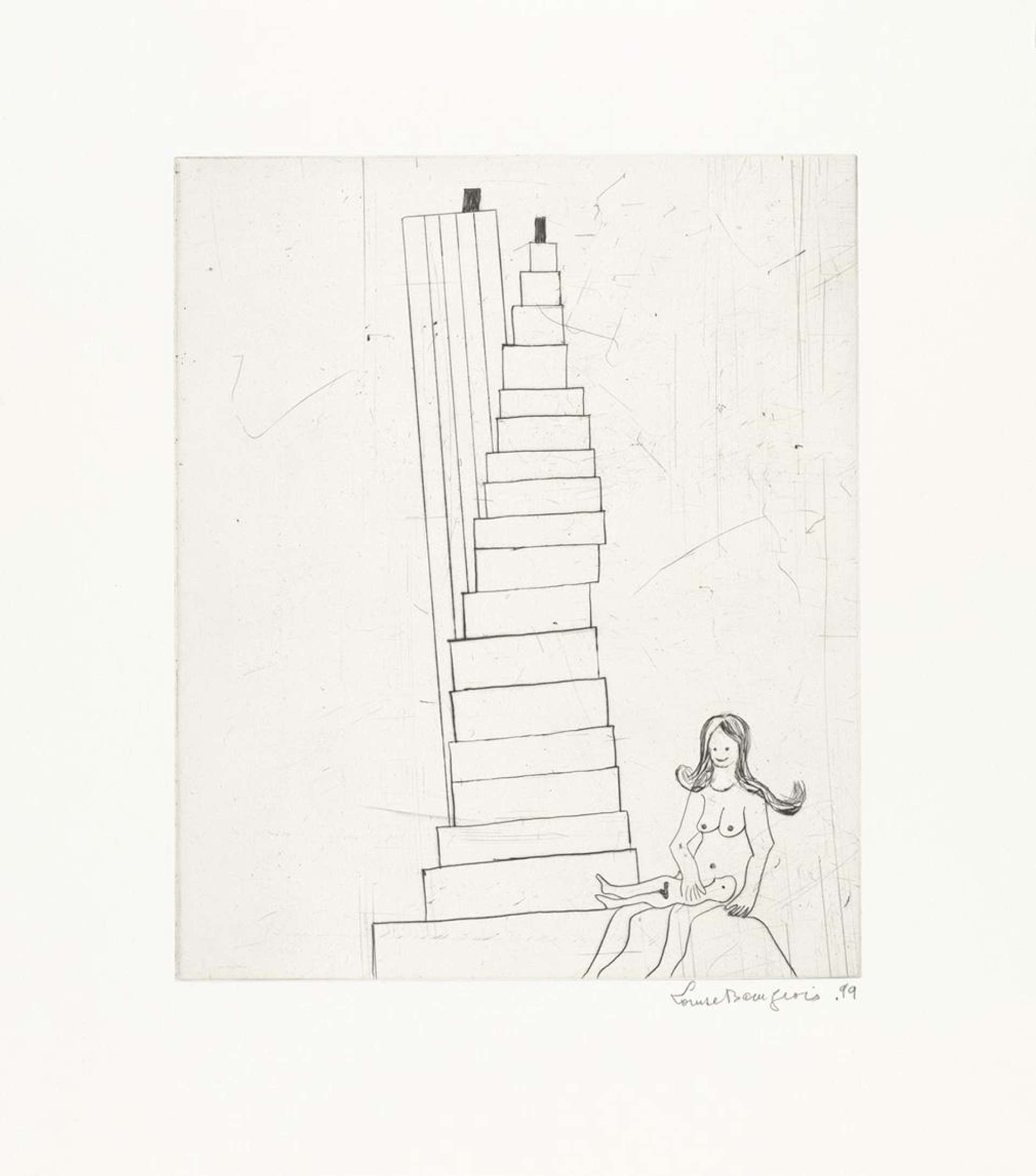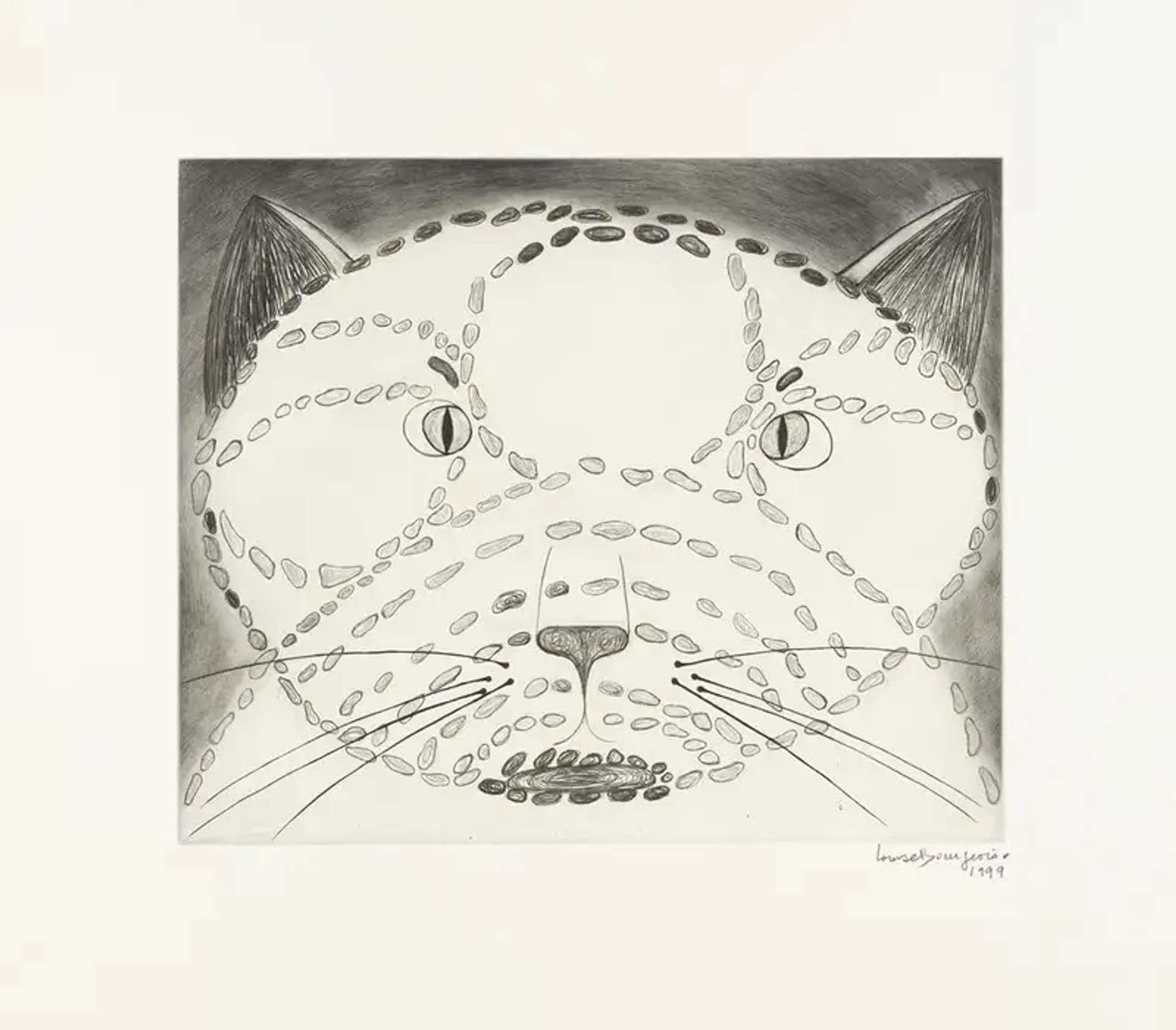 The Angry Cat © Louise Bourgeois 1999
The Angry Cat © Louise Bourgeois 1999
Leah Mentzis, Partnerships Manager[email protected]
Interested in buying or selling
Louise Bourgeois?
Louise Bourgeois' The Angry Cat series is a vivid exploration of the emotional landscape through intimate drawings and prints that blend whimsy with profundity. With each piece, Bourgeois explores themes of memory, trauma, and humour, employing recurring motifs and visual puns that draw the viewer into a deeply personal world. Central themes such as motherhood, dread, and sexuality are intertwined with a childlike quality and playful spirit, revealing the complexities of the human psyche. Through The Angry Cat, Bourgeois masterfully balances grim subject matter with levity, inviting viewers to ponder the intricate web of human emotions and relationships.
The Angry Cat Features Intimate Drawings and Prints
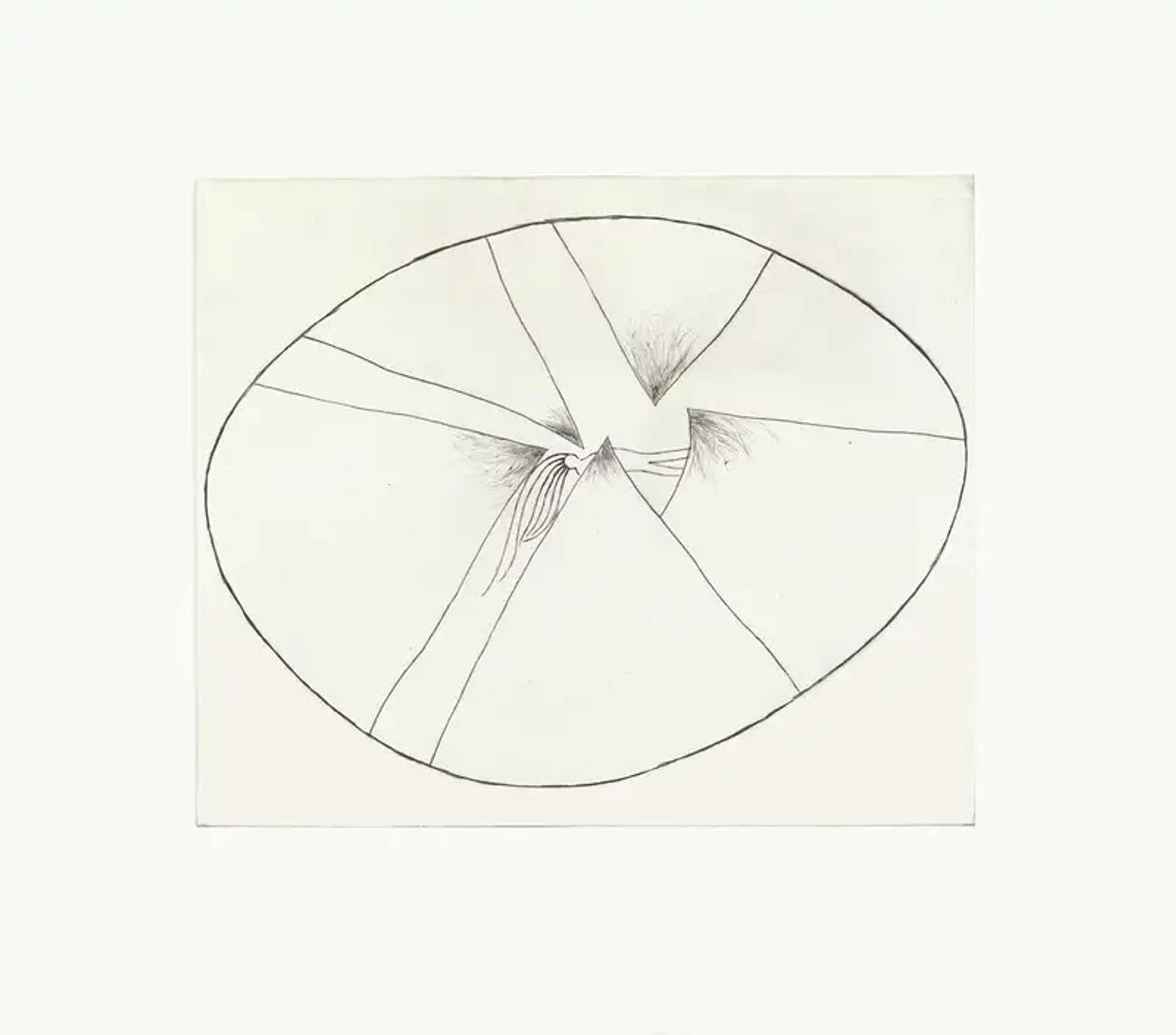 Please Hang In There © Louise Bourgeois 1999
Please Hang In There © Louise Bourgeois 1999Through this series, Bourgeois captures the essence of complex human emotions, weaving together themes of vulnerability, trauma, and the nuances of the human psyche. Each piece, charged with emotional depth, invites the viewer into Bourgeois's personal reflections, offering a unique window into the artist's exploration of her inner world and the universal experiences that connect us all.
Visual Puns Explore Memory, Trauma, and Humour
 Mother And Child © Louise Bourgeois 1999
Mother And Child © Louise Bourgeois 1999In The Angry Cat series, Bourgeois intricately weaves recurring motifs and visual puns to explore deeper themes of memory, trauma, and humour. An exemplary illustration of this approach is found in her work Mosquito, where Bourgeois transforms a typically bothersome insect into a maternal figure. The mosquito, depicted in red, is designed as a mother with a visible child in her womb, symbolising nurture and protection in an unexpected context. This creative juxtaposition not only challenges our perceptions but also highlights Bourgeois' skill in using humour and irony to explore deeper emotional truths, making profound connections between the everyday and the psychological landscapes we navigate.
The Female Body Is a Central Theme
 The Smell Of Feet © Louise Bourgeois 1999
The Smell Of Feet © Louise Bourgeois 1999The Angry Cat displays the portrayal of the female form, intertwining themes of motherhood, dread, and sexuality with poignant depth. These depictions transcend mere artistic expression, offering a window into Bourgeois' exploration of womanhood's complexities. Through her art, Bourgeois crafts a narrative that resonates with the vulnerabilities and strengths inherent in the feminine experience, encouraging a reflective engagement with the multifaceted nature of identity, and the societal constructs that shape our understanding of femininity.
Bourgeois' Drawings Exhibit a Childlike Quality
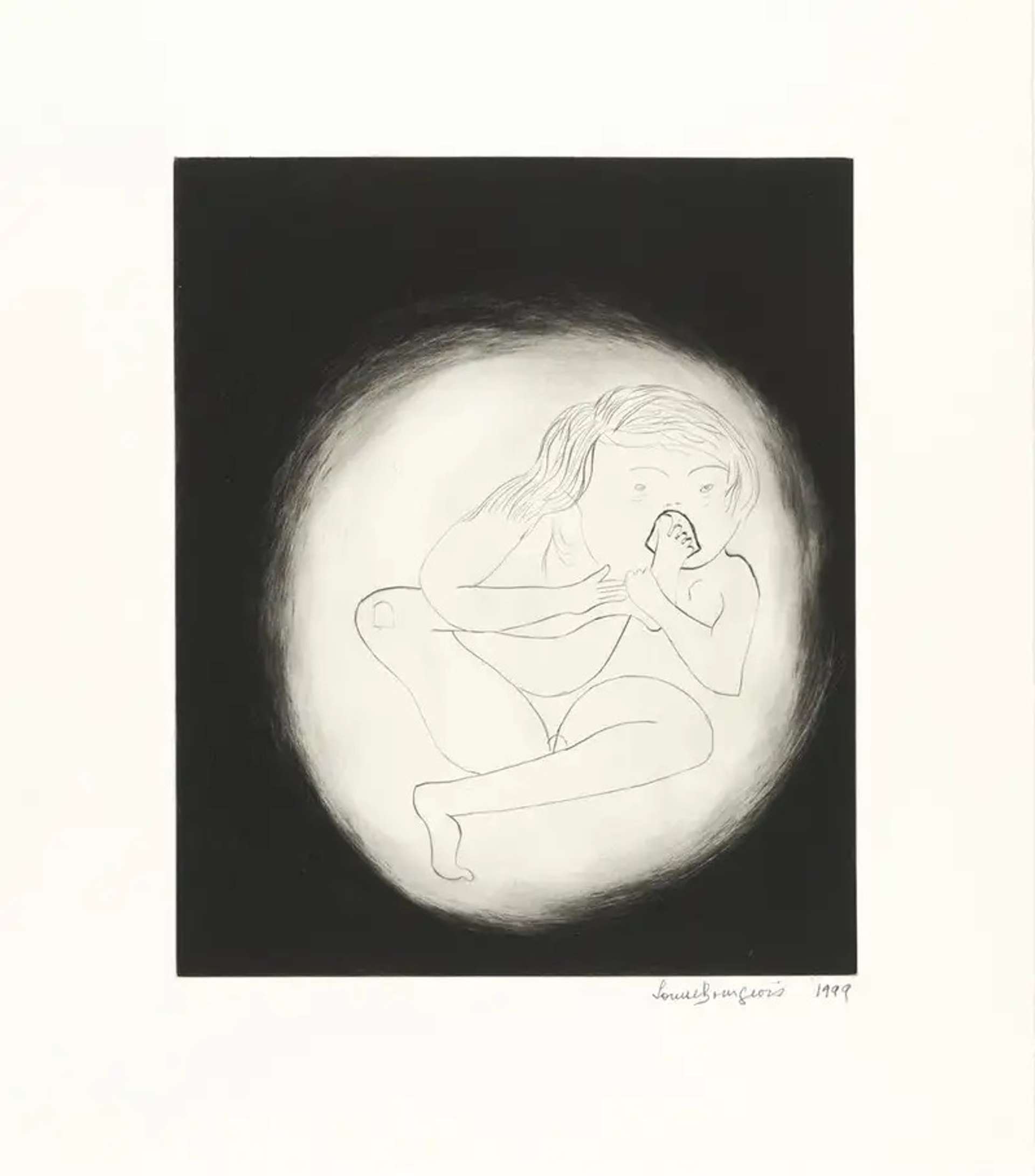 Don’t Put Your Foot In Your Mouth © Louise Bourgeois 1999
Don’t Put Your Foot In Your Mouth © Louise Bourgeois 1999Bourgeois' work in The Angry Cat is characterised by a distinctive childlike quality, enhancing the series' emotional vulnerability. This approach allows Bourgeois to communicate with a raw honesty that directly connects to the viewer's inner child, laying bare the soul's most profound fears and desires. Through these seemingly simple yet deeply symbolic drawings, Bourgeois bridges the gap between the innocence of childhood and the complex realities of adult life, inviting viewers to explore the layers of their own emotional histories and the purity of expression unfiltered by societal expectations.
The Angry Cat Balances Grim Subject Matter with Playfulness
 Madeleine © Louise Bourgeois 1999
Madeleine © Louise Bourgeois 1999Bourgeois masterfully balances unsettling themes with a playful spirit, revealing her unique ability to find humour and light in the darkest of scenarios. This juxtaposition not only highlights the duality of human experience but also offers a glimpse into Bourgeois' creative process, where levity becomes a coping mechanism and a way to make sense of the complexities of life. Through this delicate balance, Bourgeois encourages viewers to confront their own fears and traumas with a sense of resilience and hope, demonstrating the transformative power of art to heal and illuminate the human spirit.
The Angry Cat Depicts a Fiercely Amusing Feline
 The Angry Cat © Louise Bourgeois 1999
The Angry Cat © Louise Bourgeois 1999In Angry Cat, we see a seemingly fierce feline, upon closer inspection, whimsically incorporates a glass of wine as its nose, exemplifying Bourgeois' talent for infusing her art with visual puns. This playful detail transforms the initial perception of anger into one of amusement, challenging viewers to look beyond the surface and find humour in unexpected places. Bourgeois' ability to intertwine the comical with the serious invites a deeper exploration of the artwork, prompting reflections on the complexities of emotions and the ways in which we interpret visual cues.
Bourgeois Creates Sensory Experiences
 The Accident © Louise Bourgeois 1999
The Accident © Louise Bourgeois 1999In The Smell Of Feet, Bourgeois utilises sensory experiences to bridge the gap between the physical and the emotional, illustrating how a simple scent can trigger profound memories and emotions. This piece humorously portrays feet with an emanating scent, serving as a catalyst for recalling past experiences. Bourgeois' use of this sensory detail highlights her ability to tap into the subconscious, where smells unlock deeply buried memories, eliciting a visceral response from the viewer. Through this work, she explores the power of the senses in shaping our perceptions and connections to the world around us, demonstrating art's ability to transcend visual boundaries and engage with the more intangible aspects of human experience.
Mosquito Transforms an Ordinary Pest into a Regal Figure
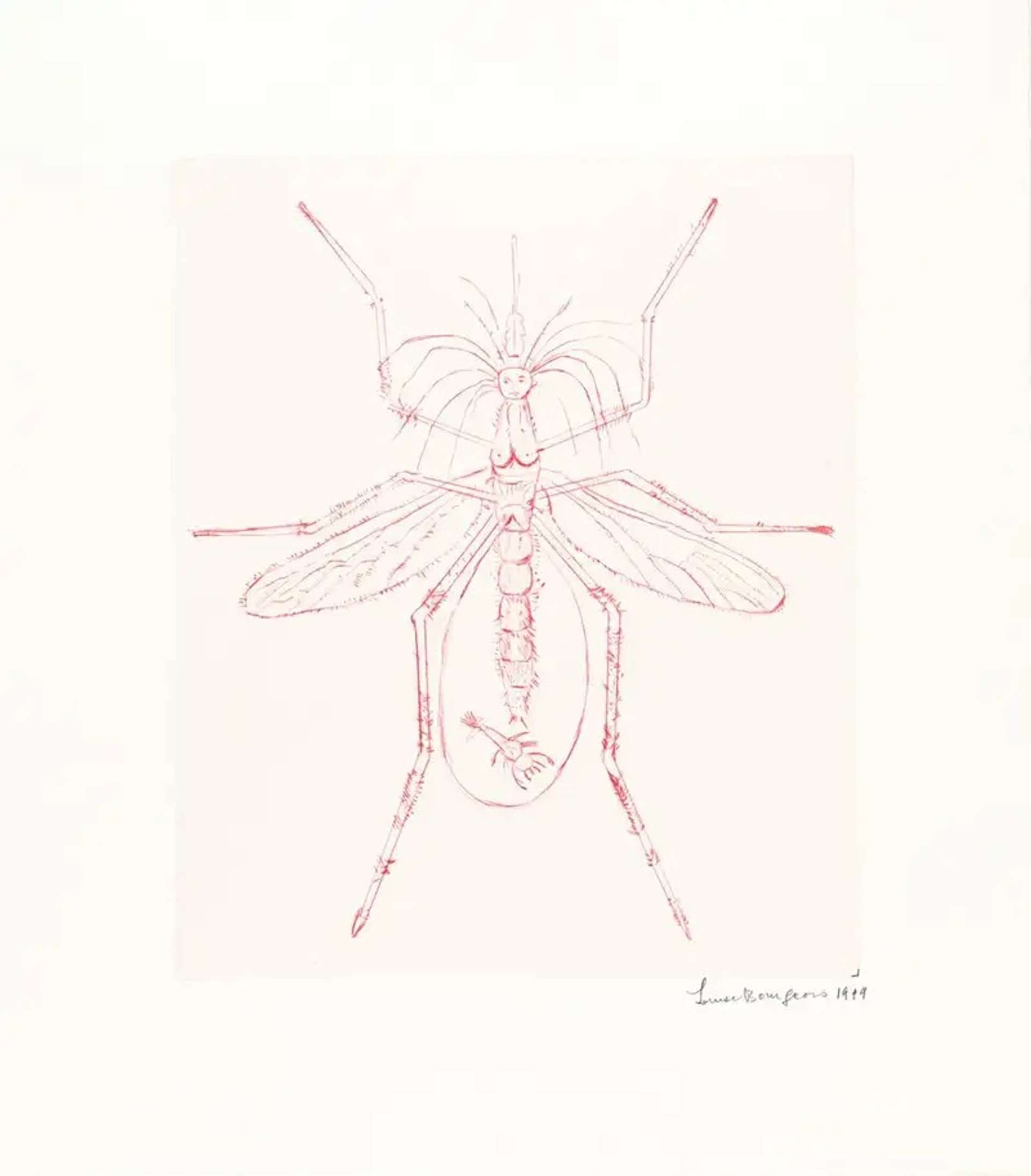 Mosquito © Louise Bourgeois 1999
Mosquito © Louise Bourgeois 1999In Mosquito, Bourgeois transforms an ordinary pest into a maternal figure, carrying her offspring. This drawing extends Bourgeois' exploration of motherhood and the body, infusing significance into the seemingly insignificant mosquito. Contrasting with her well-known spider symbolism, which often represents her mother, the choice of a mosquito as a nurturing entity probes deeper into Bourgeois' reflections on motherhood, protection, and the maternal instinct. This intriguing portrayal challenges conventional associations and invites viewers to reconsider the roles and symbols of caregiving in nature and art, showcasing Bourgeois' skill in revealing the profound within the mundane.
The Angry Cat Navigates Emotional Landscapes Through The Body
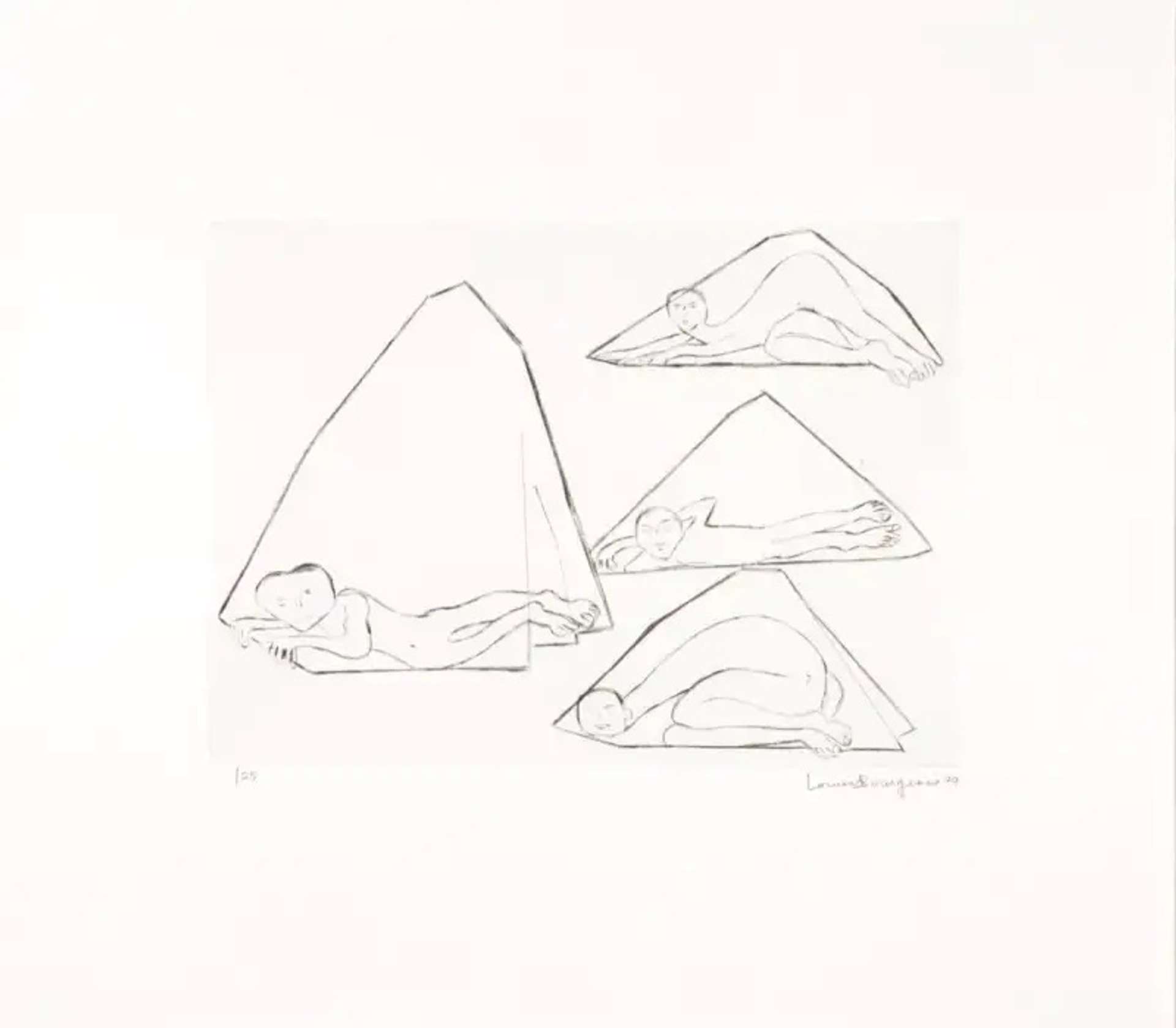 Fear © Louise Bourgeois 1999
Fear © Louise Bourgeois 1999Bourgeois' The Angry Cat series acts as a profound exploration of the intersections between emotional states and the physical body. Through her nuanced depictions of the human form, Bourgeois delves into the ways in which our innermost feelings – fear, joy, trauma – manifest physically, delivering a complex narrative around the embodiment of emotion. This body-centric approach underscores the inseparability of mind and body, suggesting that our physical selves are not just vessels but active participants in our emotional lives.
The Angry Cat is a Gateway to the Subconscious
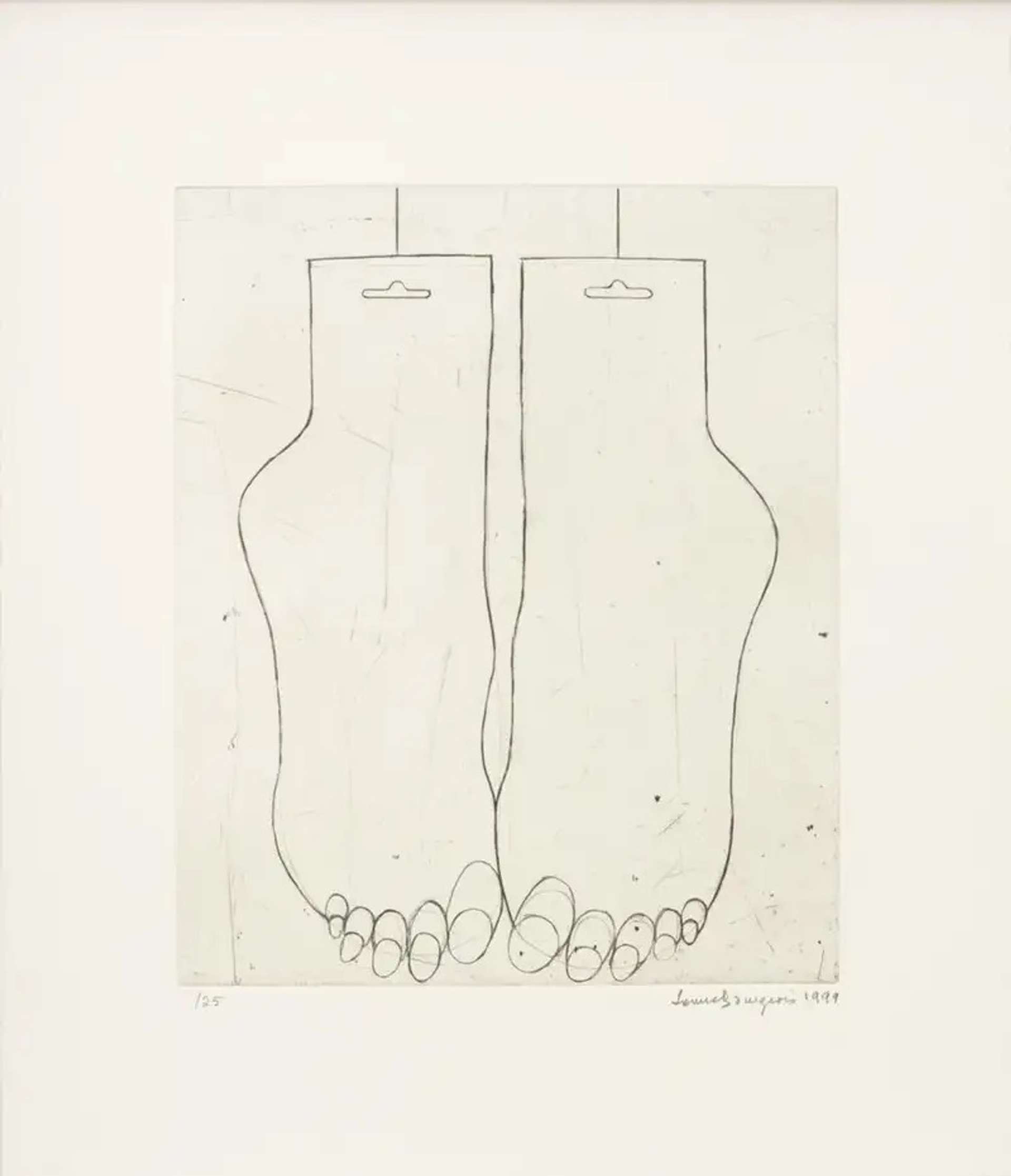 Feet © Louise Bourgeois 1999
Feet © Louise Bourgeois 1999Bourgeois' The Angry Cat series stands as a gateway to the subconscious, blending the real with the imagined to explore the depths of the human mind. Through the layering of dreamlike imagery and surreal compositions, Bourgeois creates a visual language that transcends the literal, tapping into the realm of dreams, fears, and desires that lie beneath the surface of consciousness. This approach not only demystifies the process of introspection but also celebrates the complexity of the psyche, encouraging viewers to embrace their inner worlds with curiosity and openness.


